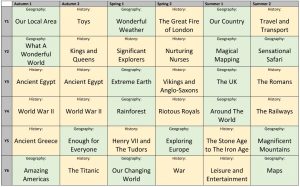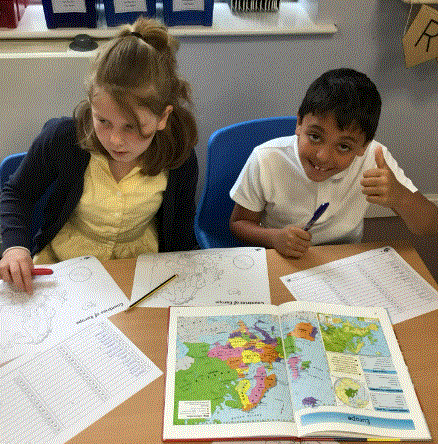What do children learn in Geography?

At St. Christopher’s, children alternate units of learning in Geography with History. The overview of what they learn can be seen in the document below.
The content of what the children are taught is rooted in the National Curriculum.
Detail of what the children are taught in Geography can be found in the knowledge organiser documents at the bottom of this page.


We intend the children to:
- develop contextual knowledge of the location of globally significant places – both
terrestrial and marine – including their defining physical and human characteristics and how these provide a geographical context for understanding the actions of processes.
- understand the processes that give rise to key physical and human geographical
features of the world, how these are interdependent and how they bring about spatial variation and change over time.
- be competent in the geographical skills needed to:
- collect, analyse and communicate with a range of data gathered through
experiences of fieldwork that deepen their understanding of geographical
processes - interpret a range of sources of geographical information, including maps, diagrams,
globes, aerial photographs and Geographical Information Systems (GIS) - communicate geographical information in a variety of ways, including through
maps, numerical and quantitative skills and writing at length.
To implement this…
In KS1, children begin to use maps and recognise physical and human features to do with the local area, building to using maps to explore the continents and oceans of the world in year 2. Further, in year 2, children will begin to compare where they live to places outside of Europe and ask and answer geographical questions. In KS2, map skills are developed further using digital maps, more keys and symbols and children begin to use more fieldwork skills. Through revisiting and consolidating skills, lessons help children build on prior knowledge alongside introducing new skills and challenge. All children expand on their skills in local knowledge, place knowledge, human and physical geography, geographical skills and fieldwork. Across both key stages, children have a range of opportunities to experience geography through practical engaging tasks beyond the classroom. Our lessons come with end of unit assessments to give the teacher and adults leading geography confidence in the progression of skills and knowledge and that outcomes have been met.

Adaptive teaching and Special Educational Needs (SEN)
Adaptive teaching strategies are used to ensure that all pupils can access learning and remain in the classroom as much as possible. Lessons are carefully planned and scaffolded to ensure that all pupils will be able to achieve the shared learning objective at their own level. Children with the greatest need, for example those with Special Educational Needs (SEN), will be given more in lesson support. This will include: more quality teaching and learning time with the class teacher; activities being broken down into smaller, more manageable steps; a higher level of personalised scaffolding in activities. It is our goal for all learners to be able to achieve the learning objective successfully in every lesson. Through adaptive teaching we aim to foster independence, resilience and self-confidence for every child.

